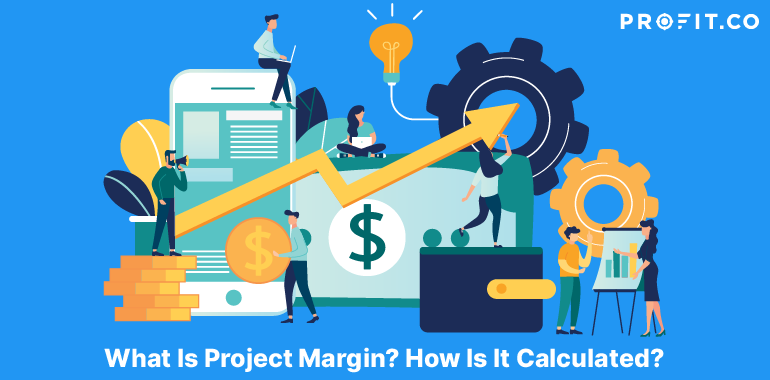Project Margin Definition
Project margin is a critical KPI (Key Performance Indicator) that determines an organization’s financial success. It highlights the expense and income, and the projected margin appears up to date upon entering new data. So, it is essential to update the timesheets, revenue forecast, and supply data on a routine basis.
Additionally, you can predict the margin you can make before acting upon it. When you key in the estimates of your finances and the number of resources you require, you will know the project margin and determine if the project can deliver the anticipated results.
Plans are of little importance, but planning is essential.
The Importance of Project Margin
Project margin has several outstanding benefits. For example:
1. You will be able to reflect your profitability in the long-run
2. You can manage and develop strategies that will enable you to progress
3. You can determine the flow of the revenue upon the completion of a project
4. You will have a clear record of the entire project and project scope
Types of the Project Margin
Current Margin
The current margin is a value that can be calculated at any point in the project timeline. This will change depending on the charges incurred compared to the revenue generated.
Projected Margin
The projected margin is the limit to look forward to upon completing a specific project.
How to Calculate Project Margin
Project margin is the profit ratio that remains after sales completion and the payment of all the expenses. So, when calculating the project margin, you deduct the entire cost from the whole amount of revenue.
The Formula of the Project Margin
If you wish to determine the project margin and obtain the exact results, you can use the following formula:
Example of Calculating a Net Project Margin
If you generate total revenue of $ 15,000 for a building project and the total cost for the project is $ 8,000, then do the following:
Net project margin= $ 15,000-$ 8,000 which is $ 7,000
How to Stop Project Margin from Reducing
Factors That Reduce the Project Margin
Numerous factors contribute to the decrease of the project margin, which include:
1. The Increasing Cost from the Supplier
One of the main contributors that reduce project margin is the increase in the total cost of goods. The supplier is also willing to adjust its revenue and margins with time. As a result, the production and supply cost hikes. For that reason, it affects the project margin. However, you can opt to get an alternative from other providers or negotiate for better prices.
2. Reducing the Prices
Whenever you lower the price to generate sales, it reduces the project margin. When you consistently offer a discount to your customers, they get into a comfort zone and are not willing to pay more, and you end up having a low project margin.
3. Tough Competition
Competitors play a critical role in affecting your project margin. When customers get attractive offers, it becomes difficult for them to reconcile with paying full price for a product or service.
4. Dynamics in the Industry
Changes in industry, technology, and product developments directly influence the project margin. As a result, the cost of the upcoming products that utilize new technology becomes a threat to high project margins.
To ensure that the margins for project work do not drastically decrease, then you must:
- Establish a consistent process for correct cost estimation
- Manage the ordering process
- Perfectly coordinate your resources
- Obtain the necessary tips that enable you to have a great response to various causes of project margin
FAQs
What Does Margin Mean In Sales?
A margin emerges from selling a product or service; then, you deduct its total expense like manufacturing cost, rent, etc. to determine the profit margin.
Do Margin And Profit Mean The Same?
Profit and margin are tools that measure how the enterprise is performing, but they are different. Margin metrics are always in percentage values, and profit, on the other hand, is always in currency terms.
Can A New Business Have A Good Margin?
Every upcoming business always has a lower margin. For more minor enterprises, employees are one of the main expenses.
Conclusion
Every successful enterprise has to pay close attention to their project margin. Having a solid understanding of this metric’s operation will keep you on track with your business.
Profit.co’s OKR management software can help you keep track of important KPIs such as project margin. This platform enables you to create custom KPI boards to track the progress of your key performance indicators. Additionally, you can set OKRs to help your team achieve more ambitious targets. You can sign up for Profit.co free for thirty days, or schedule a free demo with our experts to learn more about how Profit.co can help you achieve more, more efficiently.

